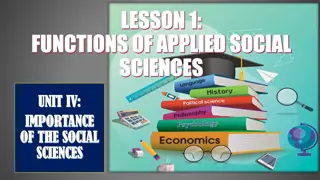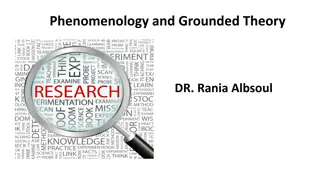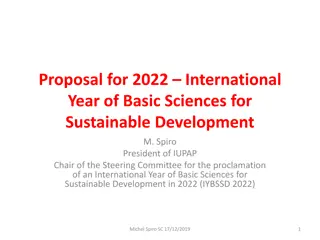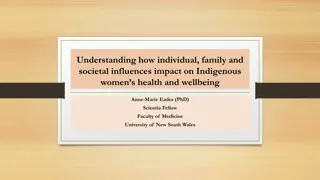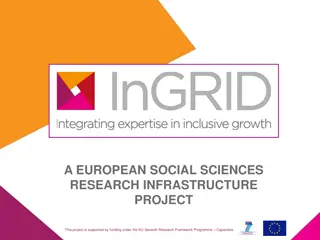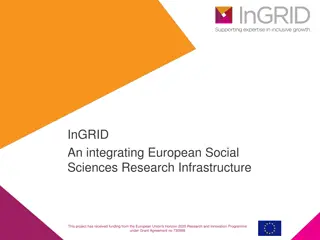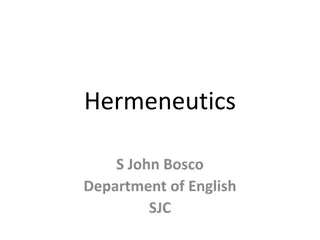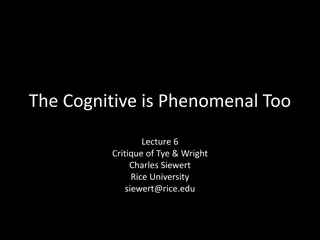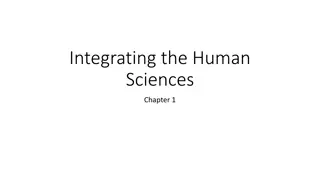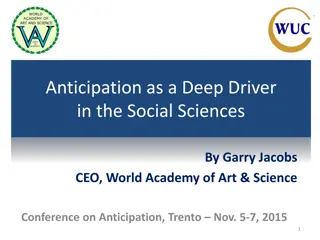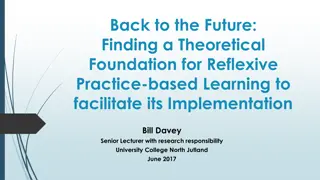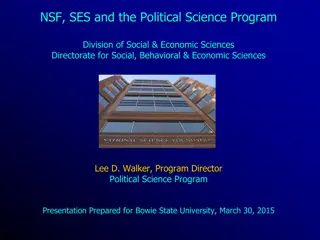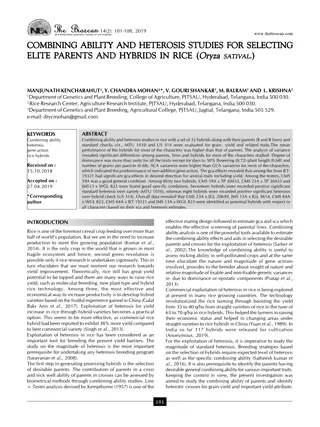Understanding Phenomenology in Social Sciences
Phenomenology in social sciences focuses on studying the world as perceived by individuals, emphasizing the active and passive aspects of consciousness. This approach explores how consciousness shapes our perception of the world and highlights the intentional acts and embodied experiences that give meaning to our reality. The method rejects naturalistic science in favor of understanding entities in relation to the perceiver's consciousness and temporal purposes.
Download Presentation

Please find below an Image/Link to download the presentation.
The content on the website is provided AS IS for your information and personal use only. It may not be sold, licensed, or shared on other websites without obtaining consent from the author. Download presentation by click this link. If you encounter any issues during the download, it is possible that the publisher has removed the file from their server.
E N D
Presentation Transcript
Phenomenology for the Social Sciences What is phenomenology? A phenomenological social science privileges study of the world as it is perceived. Phenomenology is a method of inquiry that seeks to describe and understand phenomena as they appear to the consciousness of certain peoples (Desjarlais 2003: 6). Phenomenology also directs our attention to how consciousness interprets and actively shapes the sensefulness of things for us.
How does phenomenology approach this entwining of passive and active perception? Orhan Veli (Istanbul u Dinliyorum): Istanbul u dinliyorum, g zlerim kapal (I am listening to Istanbul, my eyes closed). Walt Whitman (Song of Myself): I think I will do nothing for a long time but listen, / And accrue what I hear into myself and let sounds contribute towards me. Even affirms that hearing is an event.
Analysis of the entangled relations between activist constitution of the world and the world s revealing of itself to consciousness can be described in different terms. Perception involves a perceiving self. Thus, the phenomenology of perception considers the various intentional acts and embodied experiential processes that constitute the world s significance for the self. Husserl rejects a naturalistic science that maintains things are objectively knowable in themselves, in favour of one that accepts that entities are meaningful or known only in relation to the temporal purposes and consciousness of the perceiver.
Phenomenologys Six Most Useful Ideas What are the most useful ideas of phenomenology for social science? Phenomenology has identified or discovered certain elementary features of consciousness through which humans perceive worldly entities, events, and situations etc. Its claim is that these essential operations for example, human consciousness as embodied subjectivitygiven to us all through having a body as an organ of conscious activities (Luft 2005: 152) pertain to everyman and to everywoman, despite our differentiating social maleness or femaleness, our specific and inculcated national-ness, and our varying class-cultural subjectivities.
1.Constitution Consciousness constitutesthe meaning of the world through intentional acts and thoughts. Objectivity the act of positing the sense, value, and significance of things for one s self is understood to be constituted out of subjectivity. Sartre: an emotion is a transformation of the world in which the body directed by consciousness changes its relations to the world in order that the world may change its qualities (1976, 58, 61). Merleau-Ponty: a large or small, vertical or slanting rock, are things which have no meaning for anyone who is not intending to surmount them, [that is] for a subject whose projects do not carve out such determinate forms from the uniform mass of the in itself and cause an oriented world to arise a significance in things (1962: 436).
2. Intersubjectivity It is in the centrality of our knowing and perceiving in relation to others with or against them that our varying intentions and meanings emerge. In every encounter between individuals, or between individuals and entities, subjectivity generates inter-subjectivity action, affect, and being oriented to the other. Similarly, in every encounter between individuals, inter-subjectivity generates subjectivity, through individuals part-calibration with, or dissent from, others posited interpretations of events, speech, and action.
3. Temporality Individual-subjective and inter-subjective constitution/modification of the sense of the world is a temporal process, unfolding and emerging in time in the course of experience. A sequence of acts that perceive an (identical) thing under new conditions may either increase one s intuitive knowledge of that entity, or contradict earlier intuitions so that the sense of what is acquired is modified or cancelled (Levinas 1995: 126). There is a tension in our perceptions between the influence of the past and the efficacy of the present, each of which are cast in the light of differing anticipations about the future. Not the intense moment / isolated, with no before and after, / but a lifetime burning in every moment , says T.S. Eliot (1952).
3. Temporality Temporality is expressed in phenomenology s idea of perceptual horizons that inform constitution of the world and inter-subjective relations. Personal horizons of the past enter into one s present perception both as sedimented history of one s body and as recollections, habits and moods, fostered or unwanted. There are also horizons of the future, present perceptions oriented by future anticipations, hopes, threats, and expectations. Horizons may also be understood more literally, as in phenomenology s distinction between the perceptual processes of foregrounding and backgrounding, or of extracting a phenomenon from the background which usually accompanies it. Levinas calls this a movement between focus and fringe , in which the existence of unperceived or fringe properties of objects inheres in the possibility that they may become the central focus of attention. To be is to be experienced (Levinas 1995: 149).
4. Spatiality Individual-subjective and inter-subjective constitution/modification of the sense of the world is also a spatial process, unfolding and emerging in place in the course of experience. In losing your keys, the world transforms into a map of potential key locations.Every place the pocket of your jacket, the slot behind the sofa, the chest of drawers by the door is somewhere where the keys could be now, where they have been in the past, or where you might place them in the future. Not only are the spatial coordinates of your world now re-adjusted to the key search, so too are the temporal coordinates: what you did in the moments before you lost your key, and what you will do in the future, only make sense in relation to the lost keys (Steinmuller 2019).
5. Enskilment (and Perception) Phenomenology establishes for social science the importance of embodied sedimentations of educated knowledge and skills, given its interest in the training and modification of our conscious attention the fostering of dispositions as contributing infrastructure to a person s perception of things. Imagine a musical education in polytonality that trains performers to hear 2, 3, 4 melodic lines simultaneously. Think about how an ignorant ear may perceive the call to prayer (ezan), aroused by it in some way without understanding Arabic or comprehending the mode (makam) in which it is recited. Consider how listener expertise in the genre of death metal facilitates intelligibility of its vocalization lines (Olson, Thompson and Giblin 2018).
6. Natural Attitude The natural attitude concerns our certitude about being (Husserl 1931: 3) in our effective involvement in the world (Merleau-Ponty 1962: xiv). It involves what Husserl describes as our na vet with which one presupposes that the world is self-evidently in being given to us by experience as self-evidently already out there (1931: 5). The natural attitude assumes the existence of a subject-independent world. It originates in our existential dwelling in the world pursuing our activities, projects, and relationships in the living of which we direct our attention to various elements of those activities, entities and relations, even as these modifications in our consciousness lead to the disappearance of other of their dimensions. Duranti (2010: 3) redescribes the natural attitude as the cultural attitude.
7. Phenomenological Reduction or Epoche The phenomenologicalreductioninvolves various methods by which we neutralize the natural attitude, first so as to encounter and describe our actual experience of the world the first-person perspective and second so as to gain a sense of perspective on our [consciousness ] contribution to its constitution. Thus, phenomenological analysis is two-sided. As Jackson puts it for anthropology, the phenomenological epoche prepares the ground for detailed descriptions of how people immediately experience space, time, and the world in which they live (1996: 12). Yet secondly, it also seeks to thematize the conditions of the possibility of subjectivity and experience (Luft 2005: 150ff.).
7. Phenomenological Reduction The reduction enables us to attend to and to part explicate the presentation of the world for our conscious experience. It involves a re-focusing of our attention away from the external entity that we perceive its existence or objectiveness to our act of giving [it] meaning, and [to] the meaning and object intended (Moran 2000: 156). Phenomenology has no other goal than to place again the world of objects objects of perception, science, or logic in the concrete web of our life and to understand them on that basis (Levinas 1995: 149). The phenomenological reduction affirms that humans are partially able to discern the horizons related to intentional achievements, interests, position, desires, knowledge, anticipations, and historical experiences that insinuate themselves as mediators of our perceptual acts and judgements.




